
Cerithiidae, common name the cerithiids or ceriths, is a large family of medium-sized marine gastropods in the clade Sorbeoconcha.

Cerithium is a genus of small to medium-sized sea snails, marine gastropod molluscs in the family Cerithiidae, the ceriths.

Rhinoclavis is a genus of sea snails, marine gastropod molluscs in the family Cerithiidae, the ceriths.

Conus anemone, common name the anemone cone, is a species of sea snail, a marine gastropod mollusk in the family Conidae, the cone snails and their allies.

Cerithium caeruleum, the Cerith sand snail, is a species of sea snail, a marine gastropod mollusk in the family Cerithiidae. Cerithium caeruleum, also be called Cerithium caeruleum G.B. Sowerby II, 1855 generally can be found in large populations on intertidal rocky shores and are covered by a thin layer of sediments. They have large and solid shells, and their radula ribbon robust long about one-fifth the shell length. This species lives in the planktonic stage from 90 to 120 days and has a seven-year life history. This common intertidal species is confined to east Africa, Madagascar, and the Arabian Peninsula and is unlikely to be confused with any other Cerithium species. It is distinguished by its squat, knobby shape; and as indicated by its name, caeruleum, a grayish blue color with spiral rows of black tubercles.
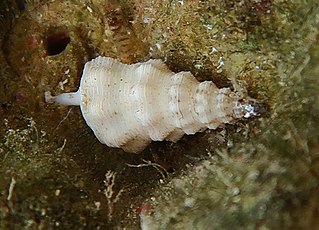
Cerithium citrinum is a species of sea snail, a marine gastropod mollusk in the family Cerithiidae.
Gourmya gourmyi, common name the gourmya cerith, is a species of sea snail, a marine gastropod mollusk in the family Cerithiidae.
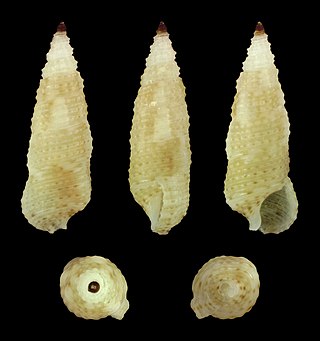
Cerithium interstriatum is a species of sea snail, a marine gastropod mollusk in the family Cerithiidae.

Cerithium novaehollandiae is a species of sea snail, a marine gastropod mollusk in the family Cerithiidae.
Cerithium salebrosum is a species of sea snail, a marine gastropod mollusk in the family Cerithiidae.
Clypeomorus admirabilis is a species of sea snail, a marine gastropod mollusk in the family Cerithiidae.

Clypeomorus batillariaeformis, common name : the necklace or channeled cerith, is a species of sea snail, a marine gastropod mollusk in the family Cerithiidae.
Clypeomorus nympha is a species of sea snail, a marine gastropod mollusk in the family Cerithiidae.
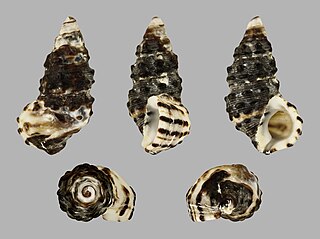
Clypeomorus pellucida, common name the pellucid clitus , is a species of sea snail, a marine gastropod mollusk in the family Cerithiidae.

Clypeomorus bifasciata persica is a subspecies of sea snail, a marine gastropod mollusk in the family Cerithiidae.
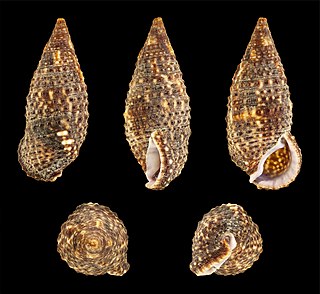
Clypeomorus purpurastoma is a species of sea snail, a marine gastropod mollusk in the family Cerithiidae.
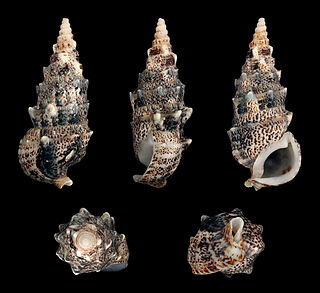
Pseudovertagus aluco, common name aluco vertagus or Cuming's cerith, is a species of sea snail, a marine gastropod mollusk in the family Cerithiidae, the ceriths.
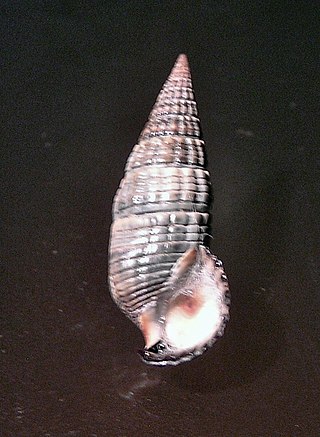
Terebralia semistriata, common name the striate mud creeper, is a species of sea snail, a marine gastropod mollusk in the family Potamididae.

Clypeomorus is a genus of sea snails, marine gastropod mollusks in the subfamily Cerithiinae of the family Cerithiidae.

Colina is a genus of sea snails, marine gastropod mollusks in the family Cerithiidae.

















